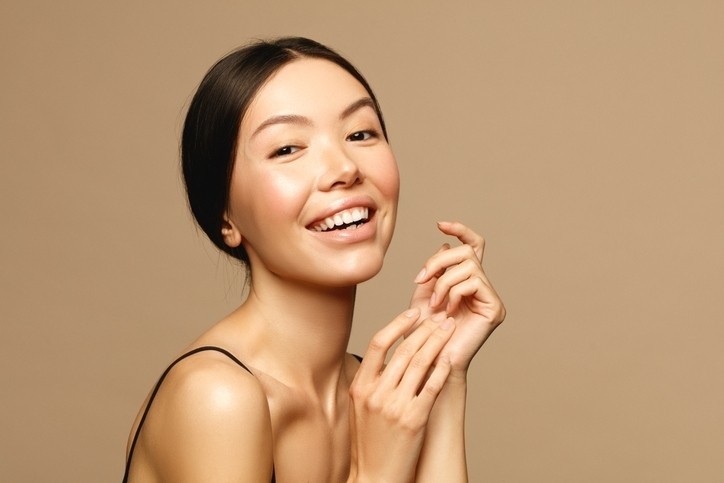Non-invasive approach: Researchers believe skin microbiome strategy yields beneficial insights

The balance of skin microbiota is crucial for maintaining healthy skin, as an imbalance in the composition of the microbiota can lead to skin problems like acne, eczema, and rosacea. But while human gut bacteria has been extensively researched, general understanding of human skin bacteria is relatively new and still developing.
To understand the role of the skin microbiota in certain skin conditions and overall skin health, researchers have been investigating the relationship between skin bacteria and various skin characteristics. For instance, some studies have found changes in skin parameters like hydration, pH levels, and water loss in people with skin conditions such as eczema.
By using advanced techniques to study the genetic material of the bacteria on human skin, scientists have identified different types of bacteria associated with specific areas of the skin, such as oily or dry regions. They have also discovered that the composition of the microbiota is unique to each individual and can be influenced by factors both inside and outside the body.
When studying the skin microbiota, it is important to choose the right sample collection method. Methods like microbial culture, cotton swabs, tape stripping, or skin biopsies are commonly used. Skin biopsy is the most invasive method, while swabs may not provide accurate results due to various factors. Tape stripping is a well-established method but has its limitations, such as interference signals from the outer layer of the skin or how the skin is rinsed before sampling.
A skin-deep study
In light of this, researchers from the University of Pavia, University of Bergamo and CLR Berlin, along with others in the cosmetics and chemical industries in Germany and Italy, conducted a study to understand the bacteria that live on human skin and how they relate to the skin’s conditions and characteristics. The researchers wanted to develop a method to study the distribution of bacteria on the skin and how it relates to its properties.
To collect samples of the skin bacteria, they used the quick and non-invasive method of tape stripping, allowing them to analyse the bacteria without needing to do a skin biopsy. They also investigated the skin's properties to see if they remained constant over time in the same group of volunteers. To make their study more accurate, they tried to limit the differences among the volunteers by selecting 229 volunteers, aged 19 to 50, with similar lifestyles.
The researchers chose to focus on the forehead as previous studies had shown that the skin's bacteria on the face can change in certain skin conditions. They also selected the shoulder as a control area because it has a similar bacterial composition to the forehead. They found that the bacteria on human skin can vary greatly between individuals, depending on factors like habits, environment, and even the products used to wash clothes.
The researchers used a questionnaire and analysed both the skin's properties and microbial distribution to obtain reliable and consistent data. This method can be used to study various skin conditions and evaluate the effectiveness of treatments or cosmetic products.
The most common types of bacteria found on the skin are Actinobacteria, Proteobacteria, and Firmicutes. The researchers observed that Cutibacterium acnes, Staphylococcus aureus and Corynebacterium species were the most abundant species. Cutibacterium acnes is considered a helpful bacteria that maintains a healthy balance of the skin's microbial community.
One important finding of the study was that Cutibacterium acnes showed a strong positive correlation with certain skin properties. This correlation had not been reported before and could be significant in understanding conditions like acne, which usually involves greater amounts of bacteria present and leads to increased irritation, inflammation, and the formation of pimples.
The study also showed that both the skin's properties and microbial composition remained stable over a 15-day period without any changes in the volunteers' lifestyles. This finding was important because healthy skin is known to maintain a balanced microbial community and consistent properties over time.
A promising starting point
The study further demonstrated that an in vivo protocol for testing both skin microbiota and biophysical parameters was successfully obtained. With the new protocol proposed in the study, the researchers wrote that it was “possible to collect bacterial flora on healthy individuals without an invasive method” and that, “with the forehead as test area, the shoulder is an adequate control area in the investigation of microbial composition and biophysical parameters”.
The method employed in the study accurately showed the ability of healthy skin to “maintain skin-barrier function, hydration and a commensal bacteria colonization over time, avoiding dysbiosis when any change in lifestyle occurs”.
It also represented a starting point to evaluate problematic skin affected by diseases like acne vulgaris, atopic dermatitis and rosacea, as well as the efficacy of cosmetic products or the treatment of dysbiosis. Last but not least, the study successfully developed a method to investigate the bacteria on the skin and its relationship with the skin's properties.
Source: Biomedicines
“Skin Microbiota: Setting up a Protocol to Evaluate a Correlation between the Microbial Flora and Skin Parameters”
https://doi.org/10.3390/biomedicines11030966
Authors: Paola Perugini, et al.
Blog Post

Seeing is believing: Supporting the skin microbiome
Delve into the power of the skin microbiome and the rise of probiotic and postbiotic cosmetics for healthier skin.



















